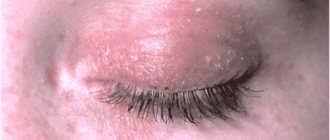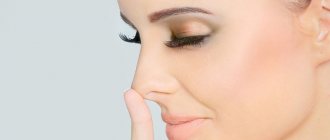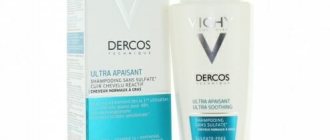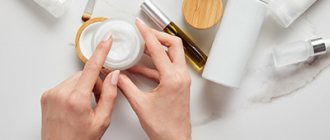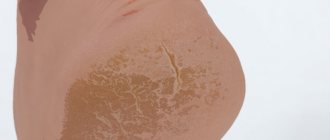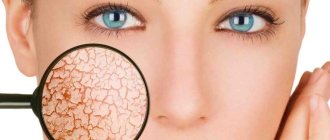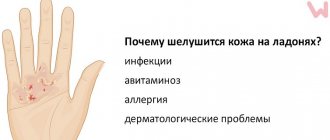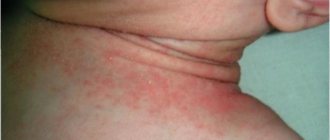Peeling skin on the feet is an unpleasant condition that every second person on the planet is familiar with. There are many reasons why it occurs. Often the problem can be fixed easily and in a short time. However, in some cases, such manifestations indicate the presence of serious diseases, which can only be identified after appropriate tests are carried out in the clinic. Peeling usually begins on the soles of the feet. Epidermal cells exfoliate due to their premature death. Then the skin of the toes, calves, ankles, etc. is peeled. It is very important to stop the process in time, preventing it from spreading over the entire surface of the lower extremities.
Why do my feet peel?
Peeling feet are most often due to the skin lacking the necessary hydration and nutrition. As a result of dehydration, scales appear on the surface of the legs, which after some time fall off like dandruff. Other reasons explaining why the skin on the feet peels are:
- non-compliance with the drinking regime - each person should drink 1.5 liters of water per day;
- Temperatures in the room are too high during the heating season - it is difficult for the body to maintain humidity at the required level. This leads to peeling on the soles of the feet, calves and between the toes;
- Uncomfortable or tight shoes, tights, socks, pants made of synthetic materials - all these are causes of skin irritation. The skin of the feet may peel and crack;
- use of incorrectly selected hygiene products - shower gels, soaps, washcloths. Chlorinated water also causes peeling of the feet;
- stress, prolonged exposure to the sun, changes in climatic conditions, improperly performed depilation also lead to the skin on the feet flaking;
- deficiency of vitamins in the body;
- hormonal changes;
- increased sweating of the feet.
A more serious cause is considered to be a fungal infection of the feet. Its main symptoms are itching and peeling of the feet, the appearance of specific spots between the toes. If these symptoms appear, you will need the help of a dermatologist, since advanced fungal infections are not easy to cure. Feet also peel with eczema, psoriasis, dermatitis, and erytoderma. In such cases, drug therapy is necessary. Another reason for flaky feet is an allergy to medications, certain foods, cosmetics, and household chemicals.
Symptoms and course
The process most often begins in the interdigital spaces, mainly between the most closely adjacent 4th and 5th fingers. When you feel a slight itch at the bottom of the interdigital fold, a strip of swollen and slightly flaky epidermis appears. After 2-3 days, a small crack appears here, releasing a small amount of serous fluid. Sometimes the stratum corneum falls off, revealing a pink-red surface. The disease, gradually progressing, can spread to all interdigital folds, the plantar surface of the toes and adjacent parts of the foot itself. The serous fluid seeping onto the surface serves as an excellent nutrient material for further proliferation of fungi.
When fungi enter through the damaged stratum corneum into the deeper parts of the epidermis, the process is complicated by an eczematous reaction. Numerous, very itchy blisters filled with clear liquid appear, which in some places merge and erode, leaving weeping areas.
The process can spread to the back of the foot and fingers, the sole, capturing its arch to the heel. The disease, either weakening or intensifying again, without proper treatment and care, can drag on for many years. Often, a complication with a secondary pyogenic infection occurs: the transparent contents of the vesicles become purulent, the inflammatory redness intensifies and spreads beyond the boundaries of the lesion, the foot becomes swollen, the patient’s movements are difficult or impossible due to severe pain; Subsequent complications may also develop in the form of lymphangitis, lymphadenitis, erysipelas, etc.
In some cases, athlete's foot on the soles is expressed by the appearance on initially unchanged skin of separate groups of itchy, deeply located, dense-to-touch blisters and blisters with transparent or slightly cloudy contents. After their spontaneous opening, the covering of the blisters disappears, remaining in the form of a corolla only at the edges of the lesion; the central parts have a smooth, pink-red color, slightly flaky, less often, weeping surface; Often new bubbles appear on it. Due to their fusion, the lesion expands and can cover large areas of the soles.
The absorption of allergens (fungi and their toxins) is a sensitizing factor for the entire body, increases the sensitivity of the skin, and an allergic rash may appear on it. It is most often observed on the hands (palms). Sharply limited erythematous discs are formed, dotted with a large number of small bubbles with transparent contents, which burst, exposing an erosive, weeping surface, surrounded by a widening rim of swollen and exfoliating epidermis. Fungi are usually not found in these lesions.
Athlete's foot begins mainly in the summer. Increased sweating and insufficient drying of the interdigital spaces after bathing contribute to the introduction of fungus.
Damage to the nails with mycoses of the feet is observed mainly on the 1st and 5th fingers, usually starting from the free edge. The nail is thickened, yellowish in color and has a jagged edge. More or less pronounced subungual hyperkeratosis gradually develops.
Recognition of the disease and principle of treatment
You can identify the reason why the skin of your feet is peeling and cracking only by seeking help from a medical facility.
However, based on some signs, you can get a certain idea about the cause of this phenomenon. For example, severe itching and an unpleasant odor indicate mycosis, and dryness and flaking in a specific area are indicators of eczema. Swelling shins and soles with discoloration of the skin in these places indicate stasis dermatitis. One of the symptoms of diabetes is a decrease in the sensitivity of the feet and toes, which is accompanied by dryness of the feet and their peeling. Common methods of treating dry skin on the feet include moisturizing it with special lotions and creams, as well as using glycolic peeling. However, in some cases further treatment will be required. When diagnosing mycosis, conservative therapy is necessary with the help of antifungal drugs prescribed by the treating dermatologist. Depending on the cause of the disease, treatment with antibacterial creams or topical steroids may be needed. If peeling is caused by diabetes mellitus or stasis dermatitis, complex treatment of these diseases with injectable and oral medications will be required.
How are cracked feet treated?
The goal of the upcoming treatment is to determine the cause of the crack and eliminate it. The situation is easiest in cases where cracks have arisen due to incorrectly selected shoes or improper skin care - it is enough to eliminate the factor that provokes their appearance.
If cracks occur due to a fungal infection or vitamin deficiency, the patient may be prescribed antifungal therapy or a complex of vitamins and microelements. Only a specialist can prescribe both!
The patient may also require antibacterial therapy if an infection has entered the wound and an inflammatory process has begun.
A professional pedicure will help remove the stratum corneum of the skin; a hardware pedicure does an excellent job of this task. With its help, you can remove only dead cells without affecting healthy ones. And to eliminate dry skin, the specialist selects moisturizing ointments and creams for the patient.
Many patients are interested in whether it is possible to use some home remedies for treating cracked feet. Podologists do not deny the beneficial effects of some of these methods - baths with decoctions of medicinal herbs, lotions, etc. However, experts recommend using any of these methods only under the supervision of a podiatrist. Traditional methods of treatment by themselves are ineffective - they can only be an auxiliary part of complex therapy.
How to get rid of peeling feet
Before you start dealing with peeling feet, you need to consult a dermatologist, who will definitely recommend eating a large amount of foods rich in vitamins. Preference should be given to vegetables and fruits, especially in spring. After all, peeling often occurs as a result of vitamin deficiency, which usually appears at the end of winter. It is during this period that a person does not receive the required amount of nutrients necessary for the normal functioning of the body.
It is very important to take daily foot baths, and they should be both relaxing and nourishing. It is in this way that the skin on the legs will rest and, with the help of opened pores, will be able to be fully saturated with nutrients and moisture. If the skin is peeling on a certain area of the leg, you need to lubricate it with a rich cream or oil every evening.
After the product is slightly absorbed into the skin, you need to put on socks made of natural material. It is desirable that all clothing be made from “breathable” materials that do not disturb the moisture balance. A good way to get rid of peeling skin on the legs is an active lifestyle, in which subcutaneous processes are much more efficient.
Effective folk remedies
Many people, both women and men, faced with a similar problem, do not know what to do and how to get rid of peeling.
There are a large number of fairly effective folk remedies that help soften, moisturize the skin of the feet, and also prevent it from peeling. When choosing a recipe, you need to carefully study its composition. After all, the product must be used regularly, and it is very important that all ingredients are always available. The most affordable way to treat peeling is to use laundry soap. For three days before going to bed, you need to thoroughly soap your feet and, without washing them off, wait until your feet dry. The soap should be washed off only in the morning. Baths using salt are useful. The procedure is performed every other day. To prepare the bath, one tablespoon of table salt must be dissolved in one liter of warm water. Salt is a very good cleanser and disinfectant. To soften the skin of your feet, you can add a small amount of soda to the saline solution.
Herbal baths are considered effective. They can be done daily. For this, chamomile, nettle or calendula are used: a glass of a decoction of one of these herbs is added to warm water. Herbs have a healing and soothing effect. The bath should last at least half an hour.
Prevention
Provides, firstly, for the disinfection of floors, wooden flooring, benches, basins, gangs in bathhouses, showers, swimming pools, as well as the disinfection of impersonal shoes; secondly, regular examinations of bath attendants and people working out in swimming pools in order to identify patients with epidermophytosis and their early treatment; thirdly, carrying out sanitary and educational work. The population needs to be explained the rules for personal prevention of athlete's foot: wash your feet every night at night (preferably with cold water and laundry soap), dry them thoroughly; change socks and stockings at least every other day; do not use someone else's shoes; Have your own rubber sandals or slippers for the bath, shower, pool.
To harden the skin of the soles, it is recommended to walk barefoot on sand and grass in the hot season.
How are wraps made?
Peeling and cracking skin does not look aesthetically pleasing and causes a lot of unpleasant sensations. A good way to prevent or get rid of such phenomena is wrapping. The most effective and popular types of this procedure include the following:
- Heat sunflower oil (100 g) in a water bath, add two yolks to it, and mix thoroughly. Lubricate the skin of your feet with the resulting warm mixture, then wrap this area in plastic wrap and put on warm socks. The duration of the procedure is 1 hour. With its help, the skin will be well and long lastingly moisturized.
- Make a paste from two tablespoons of potato starch and a small amount of water and mix it with a pre-made mixture of nourishing cream (3 tablespoons) and chamomile decoction (50 g). It is good to lubricate the problem areas with the product and, wrapping them with film, leave for half an hour. After this time, the product can be washed off. This procedure nourishes and soothes the skin well.
- Mix beet juices (50 g) and carrots (50 g) with nourishing cream (2 tbsp.). Then the resulting mixture should be applied to the feet and toes, wrapped in plastic wrap and waited for 30 minutes. At the end of the procedure, you should take a shower. This wrap nourishes the skin with vitamins.
If the problem of peeling feet occurs, you should never ignore it. It is very important to find out the cause of its occurrence and try to get rid of it as quickly as possible so that the situation does not worsen. Doctor’s consultations, drug treatment and effective folk remedies will help with this.
Preventive measures
To avoid the problem of cracks in your feet, just follow a few simple rules:
- Choose comfortable shoes that fit your size. It must be made from natural materials.
- Watch your diet - your diet should contain a sufficient amount of vitamins and microelements necessary for the body.
- Observe the rules of personal hygiene - do not neglect the care of the skin of your feet and apply for a pedicure only to specialized institutions. Do not wear (or even try on) someone else's shoes.
- Seek qualified help if you experience any, even the most minor, problems with the skin of your feet.
